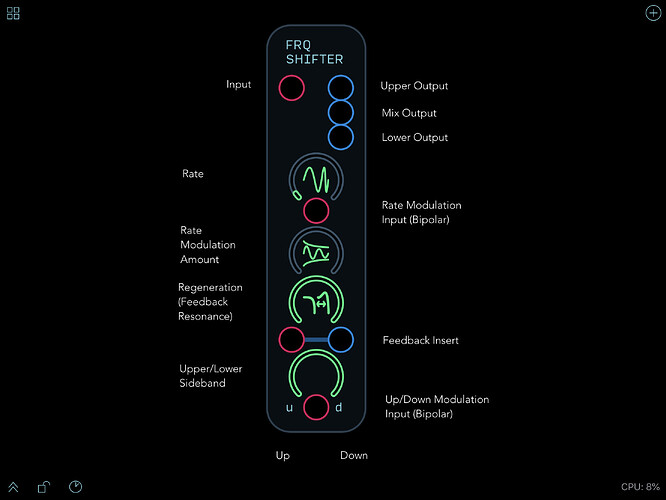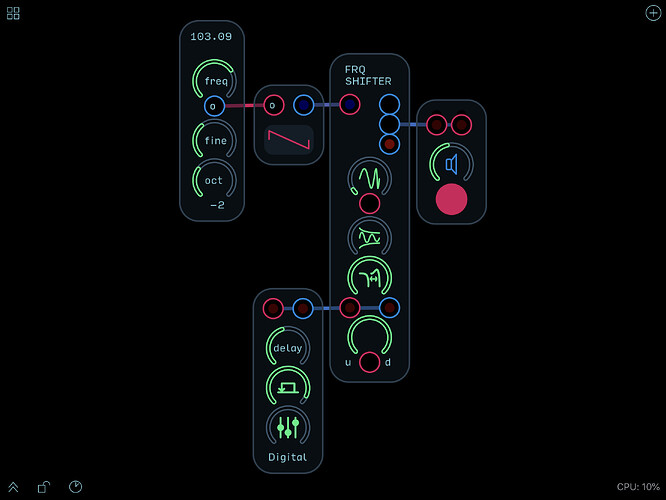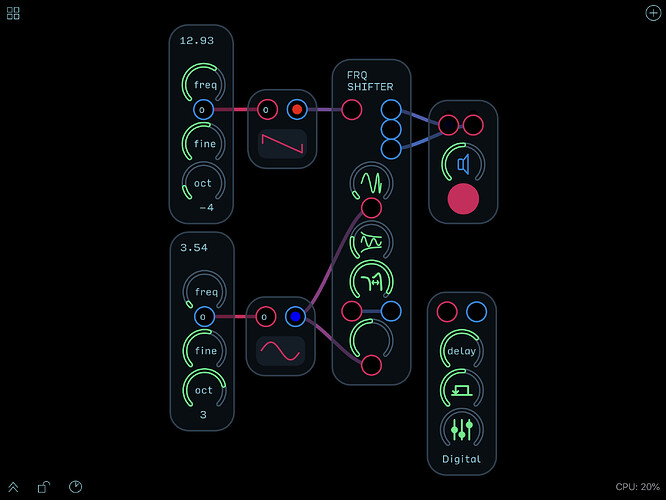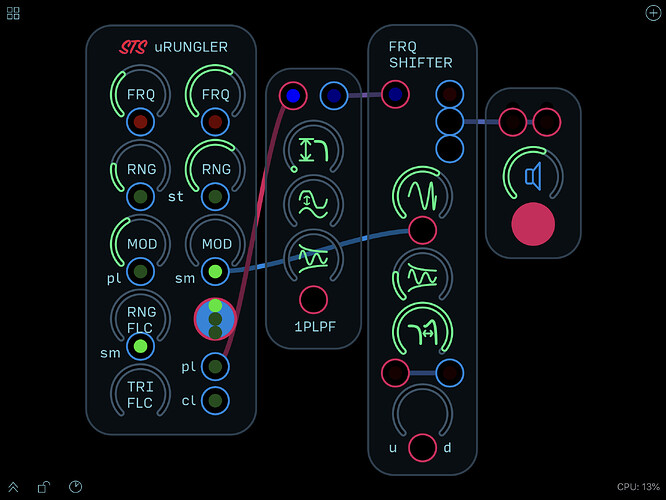Here’s my first take on putting together a Frequency Shifter.
Once again, one of Rob Hordijk’s NOVARS tutorials has provided the inspiration.
Hordijk describes the frequency shifter as kind of luxury ring modulator – with the extra feature that it’s possible to split the upper and lower sidebands. In essence it’s a ring modulator and an all-pass filter network, with the filters making it possible to cancel out one of the sidebands through phase cancellations.
The all-pass filter is something that Hordijk covers succinctly in his video on the Physics of Sound, and I’d already made one while putting together an Audulus version of his Phaser. While Hordijk provides a good explanation of the principles behind the frequency shifter and a thorough demonstration of his own module, I needed to do a little detective work before I could figure out what was going on with the filter network .
If one was only dealing with two (sine) frequencies it would be possible to use a single all-pass filter and adjust the cutoff point accordingly. However given that ring modulation typically produces multiple frequencies (especially when applied to a complex input signal) a network of filters is needed to cover the entire audible frequency range.
My first searches on the web brought me across Hordijk’s Frequency Shifting patch for the Nord G2 Modular, and Jürgen Haible’s descriptions and schematic drawings which filled in a little more detail on the filter network based on the Hilbert transform. Fortunately I also came across an article on Analog Wide Band Audio Phase Shift Networks with a diagram (see fig. 4) and some frequencies that I could use as a point of departure.
Via Don Tillman’s collection of Moog Patents I could download a PDF of the Bode Frequency Shifter that Moog produced in the early 70s. That helped fill in the final pieces of the puzzle, showing how the sine/cosine oscillator (which I’d already encountered in Hordijks Harmonic Oscillator) connects up with the Hilbert filter network (or ‘Dome Filter’ in Moog parlance) to enable the ring modulation and phase cancellations.
The filter network I’ve strung together only has 10 all-pass filters, but seems to do the trick. There is still some bleed-through though, so it could certainly be improved.
RH-RM Frequency Shifter.audulus (217.4 KB)
I’ve put together a few demos:
Here’s the classic frequency shifter ‘barber pole’ effect. The direction can be changed with the up/down knob. The adding delay to the feedback chain can add to the effect.
RH-RM Frequency Shifter Barber Pole.audulus (258.3 KB)
RH-RM Frequency Shifter uHRM Demo.audulus (284.6 KB)
And as with the Phaser the presence of all those Z-1 filters makes possible some nice percussive effects when pinging the shifter with low pulses. (N.B. The modulation inputs are bipolar.)
RH-RM Frequency Shifter Stereo Pulse Demo.audulus (258.1 KB)
RH-RM Frequency Shifter Mod Pulse Demo.audulus (262.4 KB)
And a funny Rungler trombone improvisation:
RH-RM Frequency Shifter Rungler Demo.audulus (327.8 KB)



